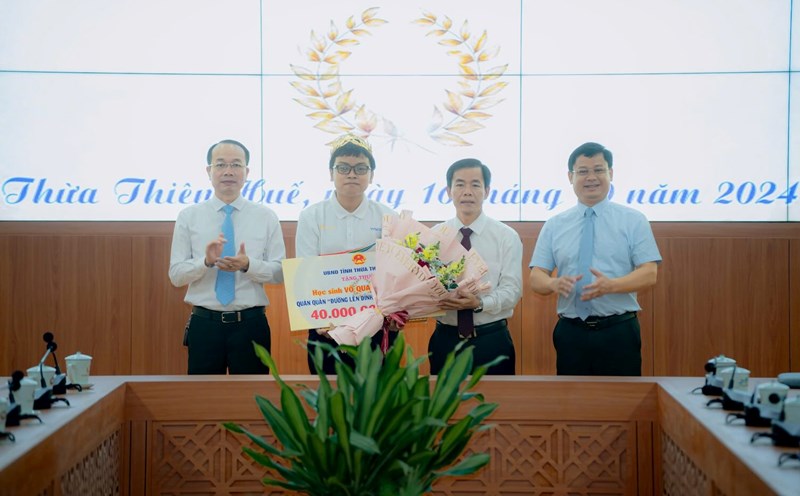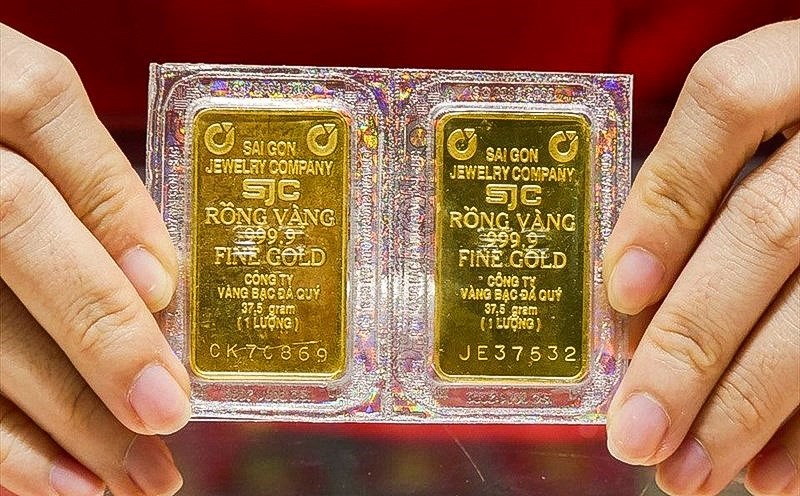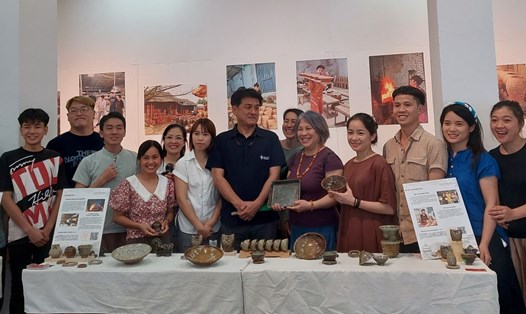Small but quality
Phu Lang Pottery Village (Que Vo district, Bac Ninh province) was recognized as a national intangible cultural heritage in 2016, famous for its large-sized eel skin-glazed ceramic products such as jars and jugs. pottery, incense burners, tops, altars... However, the income of Phu Lang potters is still low in the Northern pottery making areas. In addition, here and there in Phu Lang as well as in neighboring areas, the ceramic production industry is being industrialized, the use of gas kilns is replacing traditional ceramic production with wood fired kilns. This causes the traditional craft of ceramic making to face the risk of gradually fading and disappearing in the near future.
On the other hand, although the number of tourists visiting pottery villages has increased, the number of unique products as souvenirs with high quality and good prices is still very limited. Meanwhile, high-value and high-quality products and services for the upper class are an inevitable trend in the Vietnamese market.
Grasping this reality, within the framework of the Development Partnership Program of the Japan International Cooperation Agency (JICA), Onimaru Setsuzan Kamamoto Company and Toho Village of Japan have coordinated with the People's Committee of Phu Commune. Lang and the People's Committee of Que Vo district carry out a project to develop pottery making in Phu Lang commune for 3 years, starting from August 2021.
Mr. Tsuchimoto Amane, representative of JICA office in Vietnam, said that artisans in Phu Lang commune have mastered traditional ceramic production techniques combined with modern Japanese style, improving income. At the same time, improve resource use efficiency. A joint production workshop with a ceramic kiln following the traditional Japanese model was born in Phu Lang pottery village. 80 ceramic artisan students from Phu Lang commune and other localities across Vietnam were selected for training at the craft village. 14 artisans were voted excellent among these 80 students.
In the past 3 years, more and more exquisite small-sized ceramic products aimed at domestic and international consumers have been born, both saving clay and firewood materials and having high prices. brings better income to professionals.
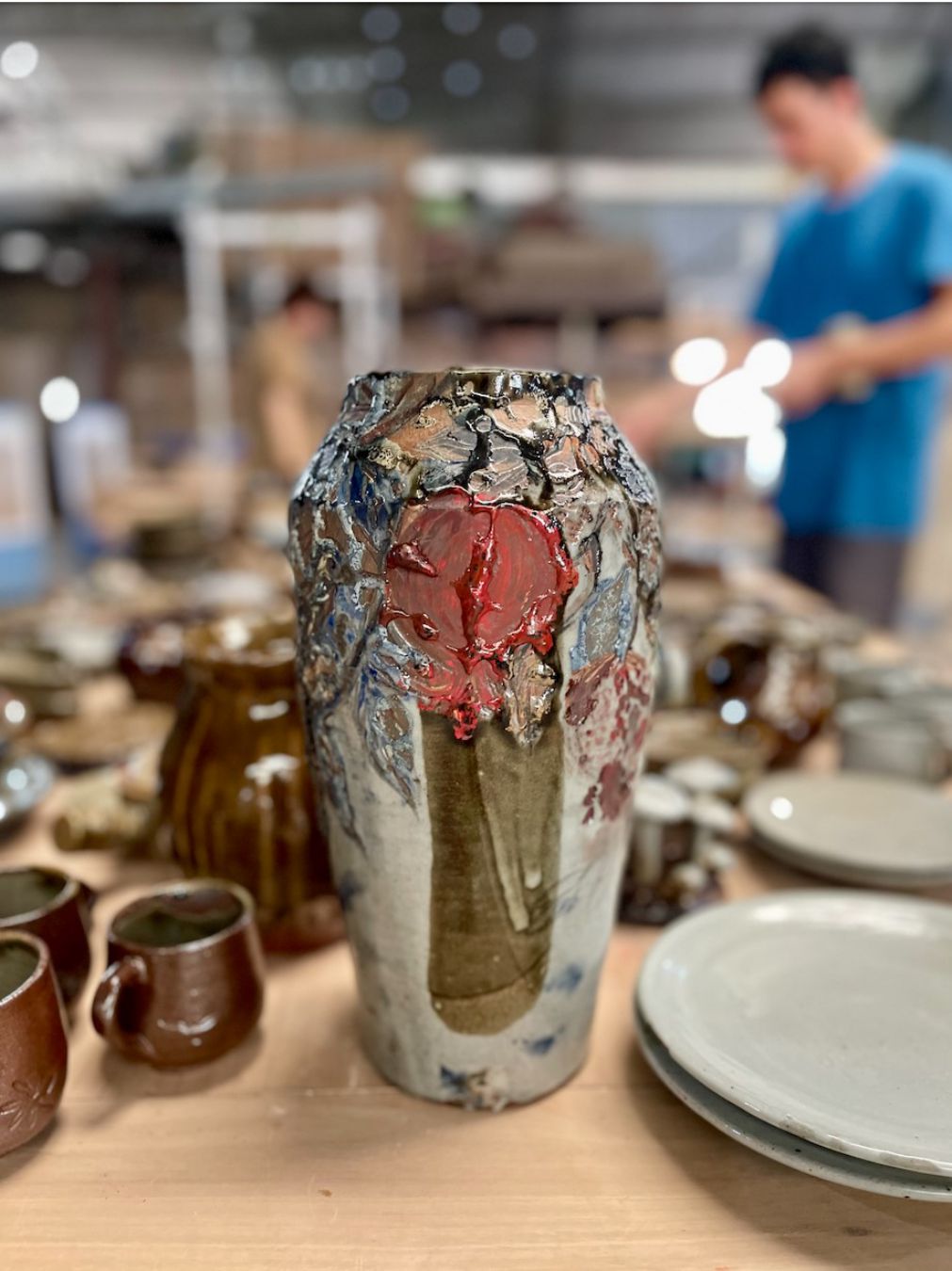
Living with a passion for pottery
The couple Bui Van Huan and Truong Thi Hong Thuong are two of the 9X ceramic artists who soon became famous in Phu Lang pottery village. As a child of Phu Lang, Huan's love of ceramics grew with him during his childhood years. Huan graduated from Hanoi University of Industrial Fine Arts, Faculty of Traditional Fine Arts, majoring in ceramics. Since then, Huan has continued to stick with ceramics and created his own brand, Gom Huan.
Huan can talk about ceramics all day without getting bored. He always wants to create many beautiful products bearing the mark of Vietnamese quintessence to satisfy his passion and spread the love of handmade ceramics and unique Vietnamese ceramics to everyone. everyone. Huan follows tradition, making handmade ceramics but requires high technology and must touch emotions to bring the highest spiritual value.
“When I look at a handmade product, I can feel the worker's emotions - whether they are in a hurry, hot-tempered or leisurely. Therefore, I always add stories to each shape, line, and pattern of the product, because any trace on the rustic work has its own meaning. And the factors that enhance the value of handmade products - are emotions, techniques, creativity" - Huan shared.
Huan and Thuong are also two students participating in the Japanese project. Coming to the project, Huan learned more professional techniques from Japanese artisans, thereby gaining multi-dimensional perspectives, from techniques to the wild or sophisticated beauty of the products created. coming from the soil, from the soul of a potter.
As for Thuong, being taught by famous ceramic experts from Japan helped her grow and learn many techniques from a country that thrives on pottery. Thuong loves the cultural interference in ceramics between Vietnam and Japan, but she always focuses on the unique identity of each product and aims to develop ceramics in that style.
Making pottery gives Huan and Thuong the opportunity to live with passion and make a living with the profession. “I am currently behind the world, but if I focus well, I can become a leader in handmade ceramics in the future. Our goal is to create a unique mark for Phu Lang craft village as well as a personal mark, to turn the country's resources into products that everyone knows are Vietnamese ceramics, and look at the products. That Vietnamese ceramic will recognize Phu Lang's unique glaze and know it is Huan ceramic" - Huan expressed.
As for Hoang Thuy, ceramics is like a fate that came to her unexpectedly. Thuy decided to stop her fashion design career after 12 years in Ho Chi Minh City. Since joining the project, Thuy has met and felt the enthusiasm and love of Japanese teachers for ceramics, which has awakened a strong love for ceramics within her. Feeling simple happiness with ceramics, Thuy found joy, being herself in a new field. Tin can survive with pottery. "It will not be too early or too late for me to dedicate good things to myself, to ceramics, little by little every day" - Thuy confided.
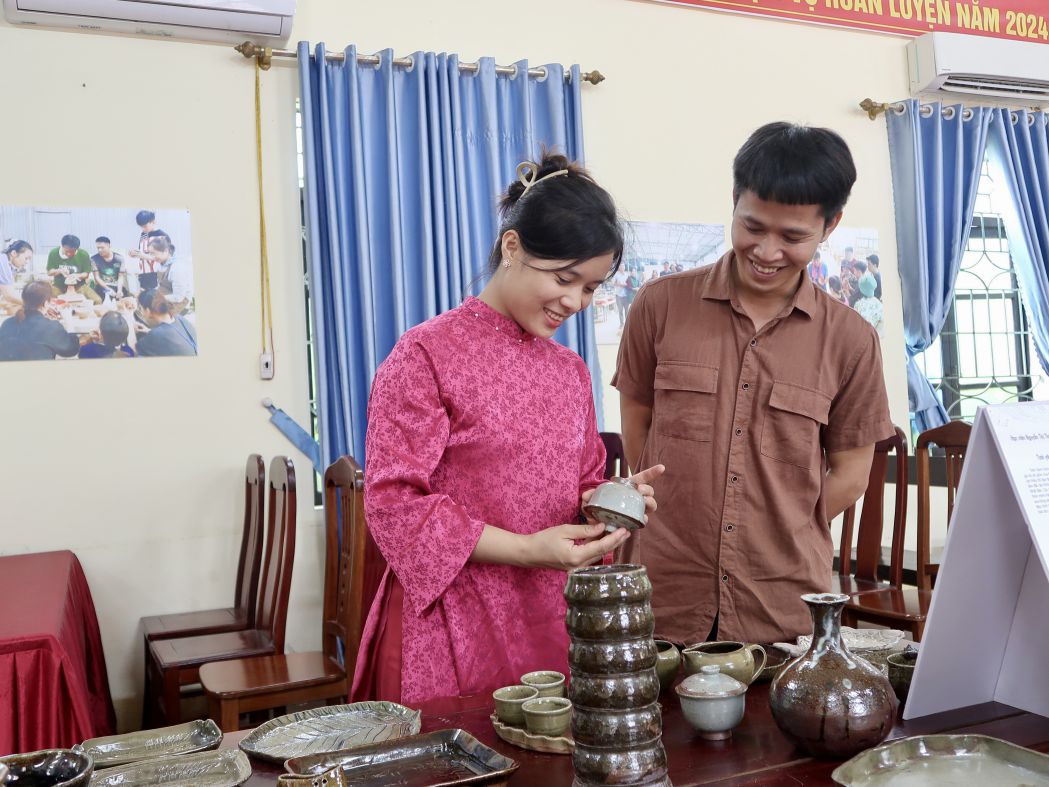
Phu Lang holds the feet of Japanese artists
Rich natural environment, high quality ceramic materials, and friendly people are the main reasons why Japanese ceramic artist - Yusuke Onimaru decided to stick with Phu Lang pottery village. With capital from JICA, Mr. Onimaru and his colleagues came to Vietnam to help villagers diversify ceramic products and gain more experience in developing sustainable tourism through the Phu Lang pottery village development project.
After graduating from Osaka University of Arts, Mr. Onimaru stayed at the school to work as a lecturer for a while and then returned to his hometown to continue his and his father's pottery workshop. His most outstanding product is tea ceremony cups, supplied to famous temples in Japan, including products offered to the Emperor. His products have also gone to many places around the world and are highly appreciated for using natural ingredients.
He explained that he chose Phu Lang because the profession here still has many manual elements, does not use machines, and still uses wood stoves to bake ceramics. "Vietnam has many good places, but I choose the right good place" - he said.
According to Mr. Onimaru - as the students affectionately call him - the most important thing to Phu Lang is that in the future the natural beauty and culture must still be preserved, because if lost, it cannot be regained. Besides, the handmade pottery village will be beneficial for future tourism development. He said, around the world and even in Japan, pottery is increasingly "mechanized", but handmade products, including Phu Lang ceramic products, are still especially popular with consumers. Popularity.
Mr. Onimaru's Toho village and Phu Lang village have many similarities. They are both small craft villages with close-knit people, so when he comes to Phu Lang, he still feels at home.
What artisan Onimaru worries about is helping handicraft villages like Phu Lang not to be lost, wishing to build Phu Lang into a major ceramic center not only in Vietnam but also famous in the world.




